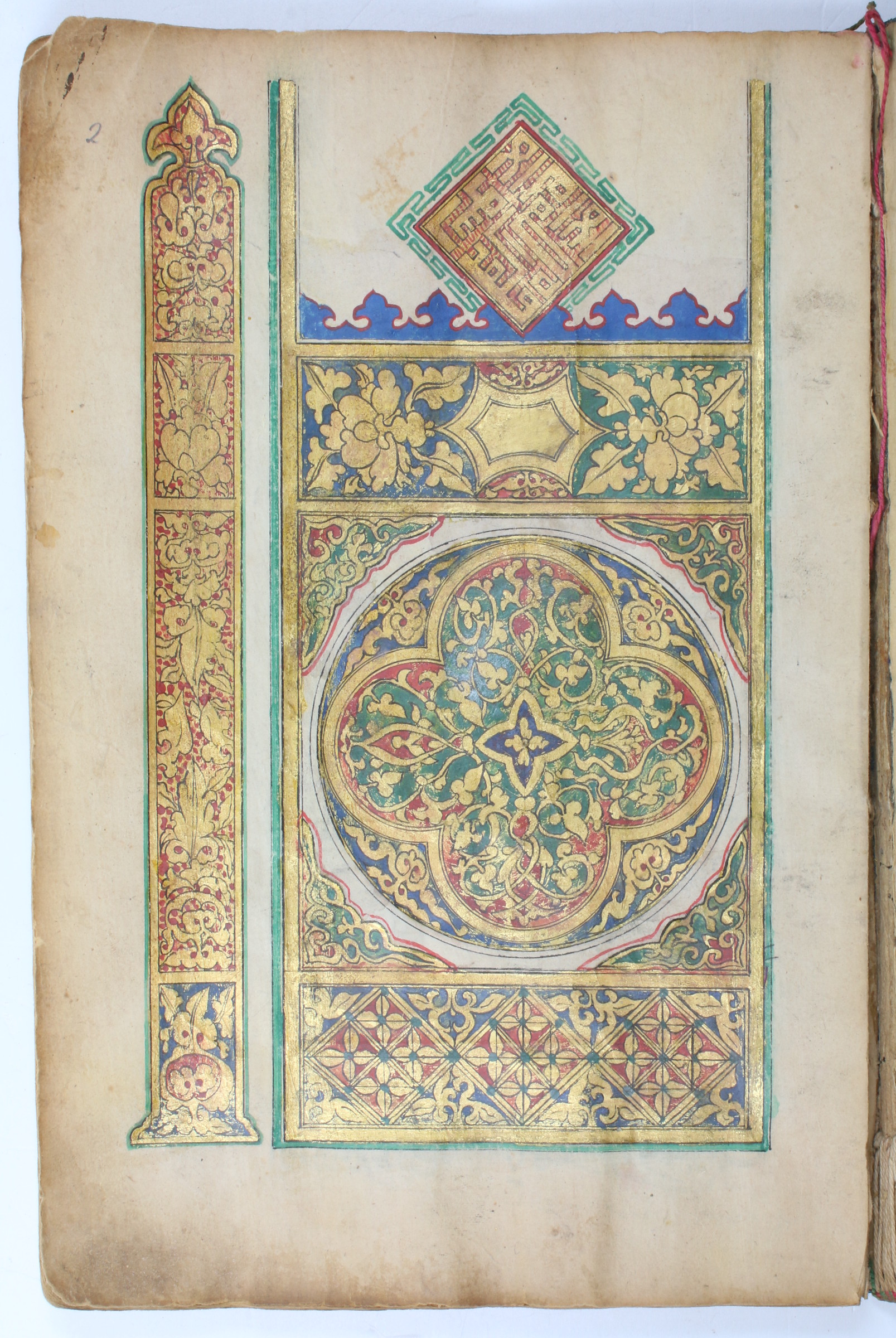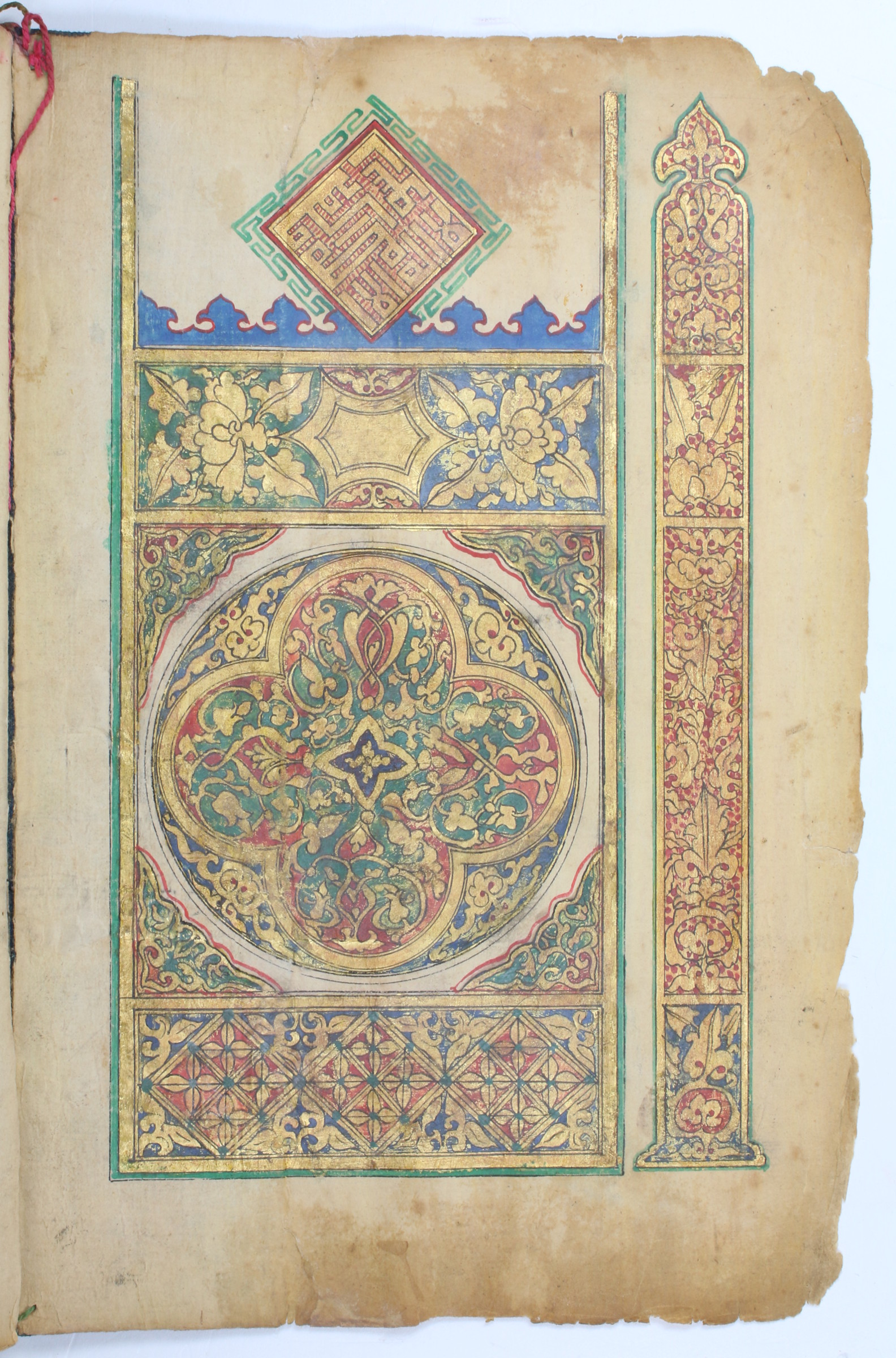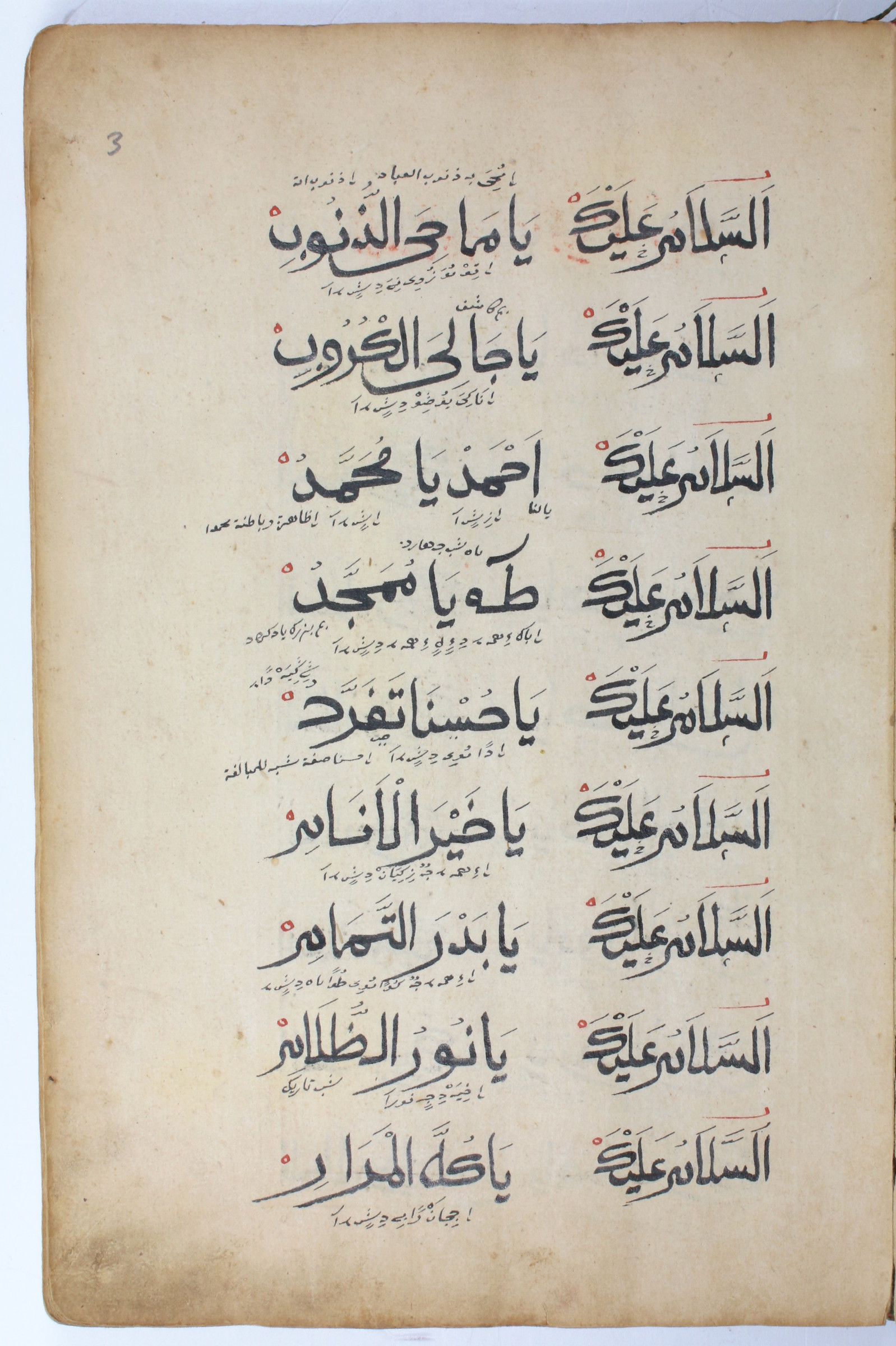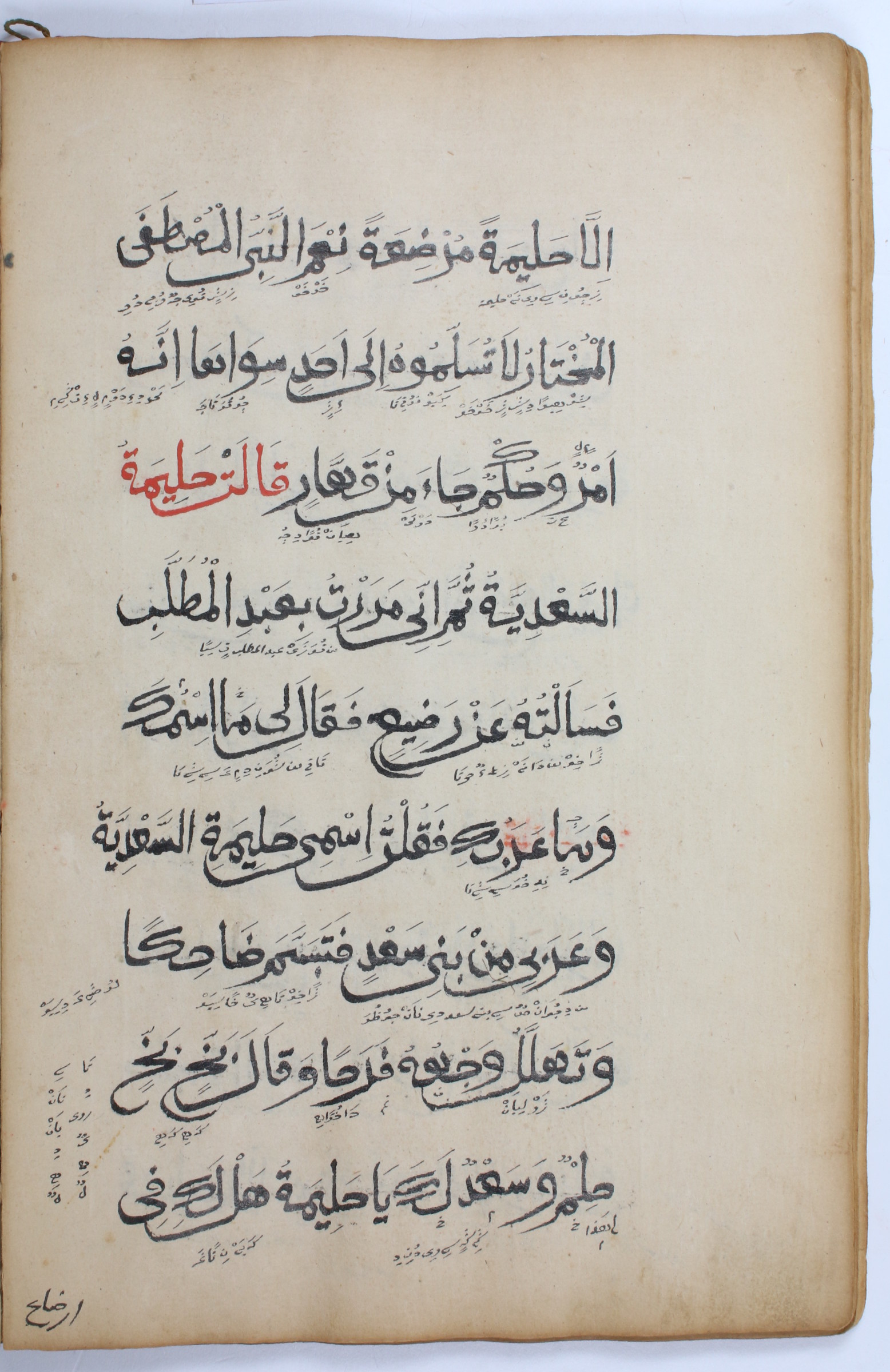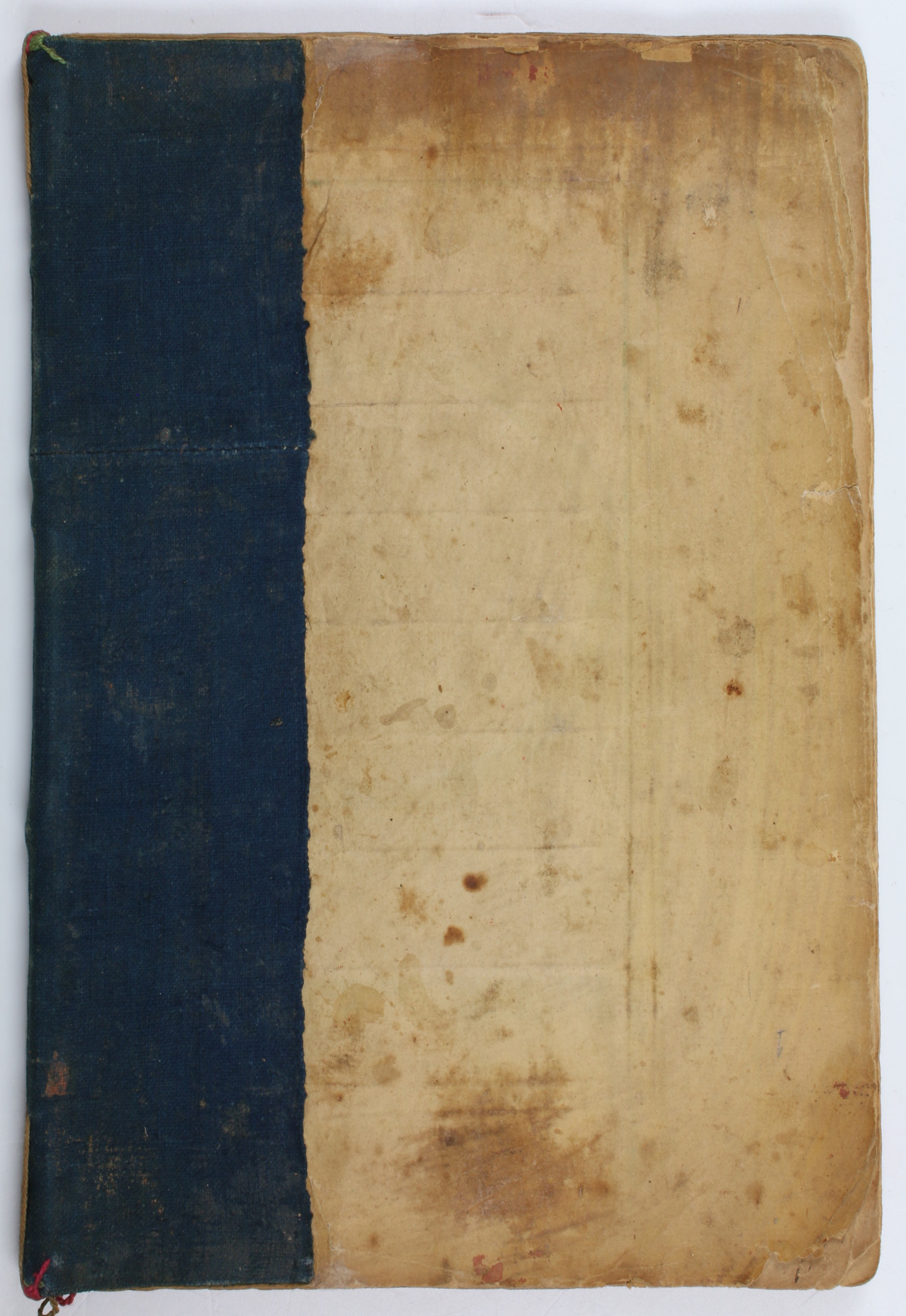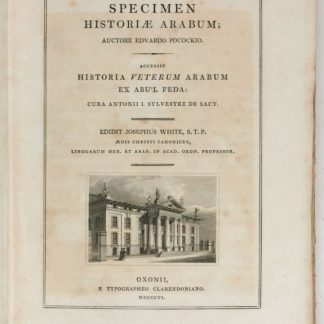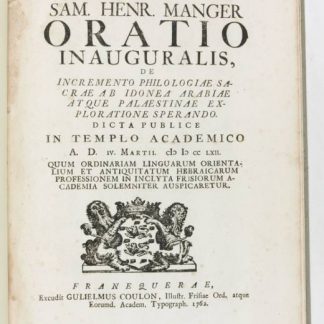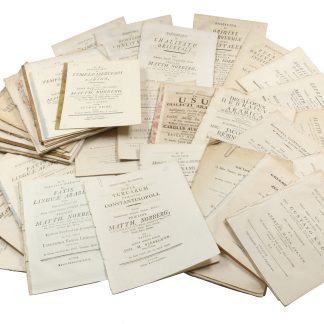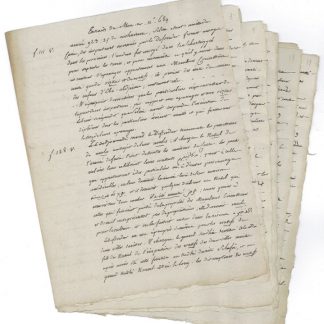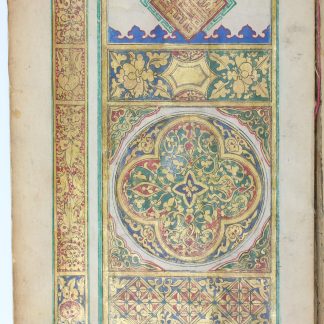Muslim prayerbook from Quanzhou, glossed in xiaojing script
Al-salamu ‘alayka [Peace be unto you].
Folio (204 x 300 mm). 46 ff. Arabic manuscript on paper. Black sini script in nine lines with red verse markers, titles in red, glossing in black. With beautifully illuminated full-page 'unwan with Chinese influence on designs, in gold, blue, red, green, and black. 18th century cloth and paper wrappers.
€ 35.000,00
A fascinating example of Chinese Muslim calligraphy and manuscript culture, with prayers in praise of Mohammed written out in the distinctive Sini script used by Muslim populations in China for hundreds of years, here accompanied by extensive glossing in the particularly Chinese-Muslim xiao'erjing (or xiaojing) script. The latter is adapted from the Arabic alphabet - with a few Persian borrowings - and is used to write out various dialects of Chinese phonetically. It appears here in interlinear and sometimes even in uncommon, vertically-written marginal glosses of the text.
Because xiaojing is famously flexible in adapting to various local Chinese dialects at various points in history, xiaojing manuscript survivals such as this one may serve an historical linguistic purpose: "An in-depth study of xiaojing transliterations carried out with the help of linguists while especially taking into account the unusual graph features may help to reconstruct the Chinese language spoken at the time under scrutiny" (Sobieroj, p. 182).
For a prayerbook, or indeed many sacred manuscripts such as the Qur'an, the use of xiaojing glosses was a growing manuscript tradition in 16th century China: "A reform of the Muslim educational system in China took place in the 16th century, when the gedimu (< qadim "old") system of mosque schools with Koranic recitation under an ahong (= 'imam) was replaced by the jingtang jiaoyu 'scripture hall education', in which Arabic was used pronounced with Chinese sounds, e.g., 'salam as sa liang mu'. In this education a systematic alphabetic representation of Chinese with Arabic letters (xiaojing) was developed, which is still used irregularly by Chinese Muslims" (Versteegh, p. 498). Through dated Safar 990 Hijri (September 1582) in the colophon, this copy may in fact be a later 18th century copy of a 16th century text. However, if indeed a 16th century original, it would be one of the earliest extant manuscript examples of xiaojing glosses. Regardless, it is a rare and valuable example of Sino-Arabic manuscript tradition, and the Muslim history of China.
Light exterior wear, binding a touch delicate.
Florian Sobieroj, "Standardisation in Manuscripts written in Sino-Arabic Scripts and xiaojing". In: Creating Standards. Interactions with Arabic script in 12 manuscript cultures, ed. by Dmitry Bondarev, Alessandro Gori & Lameen Souag (Berlin & Boston, 2019), pp. 177-216. Kees Versteegh, Arabica, Vol. 48.4, Linguistique Arabe: Sociolinguistique et Histoire de la Langue (2001), pp. 470-508.

